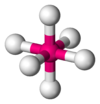Lattice Energy Of Ionic Bond
A crystal lattice is the regular arrangement of atom or ions or molecular in space and gives a definite geometry to the solid substance.The lattice energy of crystalline solid is defined as the energy of formation of the crystal from infinite-separated ions,molecular or atoms The concept of lattice energy was developed for rocksalt structure and shalerite structure compound like NaCl and ZnS..
Lattice energy is a type of potential energy which is required to break apart an ionic solid and convert its component atoms into gaseous ions. The definition cause the value of lattice energy always positive, because it is always a endothermic reaction.Again, it is defined as or other definition of lattice energy defines it is a reverse process,meaning it is the energy released when gaseous ions bind to form an ionic solid. According to this,the value of lattice energy is negative i.e it is exothermic reaction.
The amount of energy released when cations and anions are united together in their respective lattice sites in a crystal from 1 mole of ionic solid is called lattice energy.
M+ (g) + X− (g) → MX (s) + energy released called as lattice energy.
cation anion
Its may also be defined as the energy required to break 1 mole of ionic solid crystal into cations and anions in their gaseous state.
MX + energy required called → M+ + X−
lattice energy cation anion
The energy required and energy released in both cases in same magnitude but opposite in sign. Lattice energy cann't be measured directly but the experimental determination takes place by two ways:
1) Theoritical determination of lattice energy : Born-Lande experiment
2) Experimental determination of lattice energy : Born-Haber cycle
- Theoritical determination of lattice energy : Born-Lande experiment Born-lande equation is a concept originally formulated in 1880 and used to calculated the lattice energy of a crystalline ionic compound. The Born-Lande eqaution states that,"the lattice energy can be derived from ionic lattice based on electrostatic potential and the potential energy due to repulsion" Born-Lande equation based on the assumption that the ionic lattice where ions are compressed together by mutual attraction of electrostatic change and achieve the equilibrium distance apart due to a balancing short range rupulsion.

- NA is the Avogadro constant
- M is the Madelung constant, relating to the geometry of the crystal;
- z+ is the charge number of cation;
- z− is the charge number of anion;
- qe is the elementary charge , equal to 1.6022×10−19 C;
- ε0 is the permittivity of free space , equal to 8.854×10−12 C2 J−1 m−1;
- r0 is the distance to closest ion; and
- n is the Born exponent, a number between 5 and 12, determined experimentally by measuring the compressibility of the solid, or derived theoretically
- Experimental determination of lattice energy : Born-Haber cycle In 1919, max Born,Fritz Haber proposed the model to determine the lattice energy indirectly, by assuming that the formation of an ionic compound takes place in a series of steps and procedure is known Born Haber cycle. It is based on Hess law and relates the lattice energy of ionic compound to ionization energy, electron affinity and other atomic properties. Born Haber cycle is based on the assumption that, the formation of one mole of crystalline ionic compound,MX can occurs either by the direct combination of M(s) and half X2(g) or by an alternative process.
Using the Born-Haber Cycle
The values used in the Born-Haber Cycle are all predetermined changes in enthalpy for the processes described in the section above. Hess' Law allows us to add or subtract these values, which allows us to determine the lattice energy.
Step 1
Determine the energy of the metal and nonmetal in their elemental forms. (Elements in their natural state have an energy level of zero.) Subtract from this the heat of formation of the ionic solid that would be formed from combining these elements in the appropriate ration. This is the energy of the ionic solid, and will be used at the end of the process to determine the lattice energy.
Step 2
The Born-Haber Cycle requires that the elements involved in the reaction are in their gaseous forms. Add the changes in enthalpy to turn one of the elements into its gaseous state, and then do the same for the other element.
Step 3
Metals exist in nature as single atoms and thus no dissociation energy needs to be added for this element. However, many nonmetals will exist as polyatomic species. For example, Cl exists as Cl2 in its elemental state. The energy required to change Cl2 into 2Cl atoms must be added to the value obtained in Step 2.
Step 4
Both the metal and nonmetal now need to be changed into their ionic forms, as they would exist in the ionic solid. To do this, the ionization energy of the metal will be added to the value from Step 3. Next, the electron affinity of the nonmetal will be subtracted from the previous value. It is subtracted because it is a release of energy associated with the addition of an electron.*This is a common error due to confusion caused by the definition of electron affinity, so be careful when doing this calculation.
Step 5
Now the metal and nonmetal will be combined to form the ionic solid. This will cause a release of energy, which is called the lattice energy. The value for the lattice energy is the difference between the value from Step 1 and the value from Step 4. The diagram below is another representation of the Born-Haber Cycle.
where





 where h= planck constant
where h= planck constant 






























